Las mujeres de Victoria Molina
Texto por Adriana Cantoral (Escritora de Arte)
Las mujeres de Victoria Molina son auténticamente hechas a mano, ya que la pintora las imagina, boceta, diseña y construye detalle a detalle. Para ello recurre a miles de recortes de revistas que, uno a uno, van formando el rostro, las facciones y la naturaleza que las acompaña. Ese tipo de collage, muy minucioso, brinda a los personajes femeninos unos gestos, texturas, luces, sombras y expresiones únicas. De ese modo, en sus creaciones figurativas, la artista representa la encarnación femenina en Arte, es decir, enaltece a la mujer a la par de una obra de arte; con una esmerada belleza, una exquisita sensualidad y una cuidada estética.
Asimismo, la conjunción de lo femenino con lo natural o más bien, la feminidad al natural apunta a una concepción universal de la fémina. De tal suerte, en los cuadros de la autora la vida florece en coloridas vegetaciones que germinan de ideales femeninos. En otras palabras, las armónicas plantas, flores y frutos se arraigan a la madre tierra que cada mujer lleva dentro de sí. Esa fertilidad femenina se manifiesta en colibríes; con finos plumajes, en cactáceas; con ricos colores, en suculentas; con hermosos contornos y demás especies que dotan de un poder especial a sus portadoras. Sin duda, lo bello, lo pleno y lo vivo coinciden en ellas, tal cual diosas terrestres; divinidades de los desiertos y las montañas de México.
La mujer como paisaje es también otra temática en sus pinturas, pues observamos su piel abundante en relieves, accidentes, líneas, formas, volúmenes, profundidades y espacios. De la misma manera, sus rasgos faciales, cuerpos y posturas obedecen a ese llamado de la tierra con la presencia de elementos orgánicos y naturales. Caben destacar los ojos, como valles floridos o agua de mar, que a veces nos miran fijamente con neutralidad, mientras que en otras ocasiones nos evaden. De cualquier forma, esos fragmentos y trozos de papel con los que conforma caras nos recuerdan a luminosas pinceladas impresionistas, dinámicos mosaicos expresionistas o quizás, delicadas plumas configuradas en libertad.
Victoria Molina's women
Text by Adriana Cantoral (Art Writer)
Victoria Molina's women are authentically made by hand, as the painter imagines, sketches, designs and builds detail by detail. For this, she resorts to thousands of magazine clippings that, one by one, form the face, the features and the nature that accompanies them. This type of collage, very meticulous, gives the female characters unique gestures, textures, lights, shadows and expressions. In this way, in her figurative creations, the artist represents the female incarnation in Art, meaning that, she exalts women at the same time as a work of art; with a careful beauty, an exquisite sensuality and a careful aesthetic.
Likewise, the conjunction of the feminine with the natural or rather, the natural femininity points to a universal conception of the female. Thus, in the author's paintings, life flourishes in colorful vegetation that sprouts from feminine ideals. In other words, the harmonious plants, flowers and fruits are rooted in the mother earth that each woman carries within her. That feminine fertility manifests itself in hummingbirds; with fine plumage, in cacti; with rich colors, in succulents; with beautiful contours and other species that endow its bearers with a special power. Undoubtedly, the beautiful, the full and the living coincide in them, just like terrestrial goddesses; deities of the deserts and mountains of Mexico.
The woman as landscape is also another theme in her paintings, since we observe her abundant skin of hers in reliefs, accidents, lines, shapes, volumes, depths and spaces. In the same way, her facial features, bodies and postures obey that call of the earth with the presence of organic and natural elements. It is worth highlighting her eyes, such as flowery valleys or sea water, which sometimes stare at us with neutrality, while at other times they evade us. In any case, those fragments and pieces of paper with which she forms faces remind us of luminous impressionist. brushstrokes, dynamic expressionist mosaics or perhaps, delicate feathers configured in freedom.
2
“Su manera novedosa de usar el collage como un pincel haciendo que cada trozo de papel se convierta en una pincelada del mundo externo que construye una nueva realidad sobre tabla”
“His novel way of using collage as a paint brush makes each piece of paper become a brushstroke of the external world that builds a new reality on board”
Ulrike Figueroa (Art Historian)
 Fong
Fotografía por Hector Fong
Photo by Héctor
Fong
Fotografía por Hector Fong
Photo by Héctor
3
Collage on board
190 x 122 cm

2 COLLAGE 2
DUDLEYA (2017)
Detalle Detail
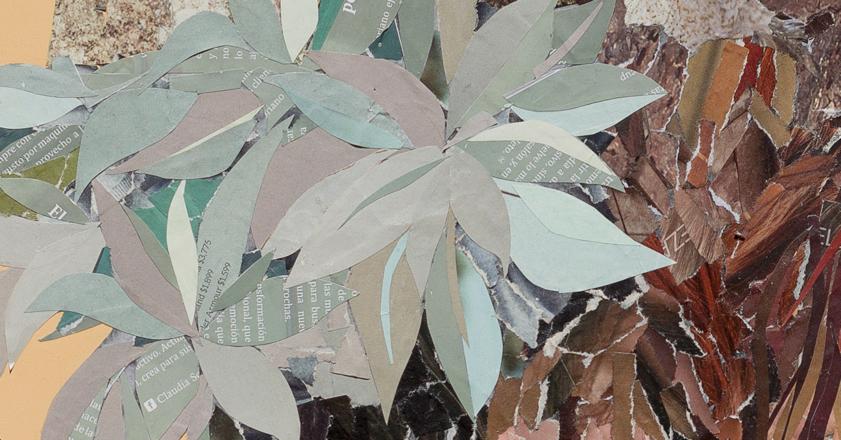
Cuando era niña, mi hermana mayor me decía que “coleccionaba basura”, ella específicamente se refería a un sobre transparente de plástico en el que recolectaba toda clase de papeles de diferentes colores y texturas, pero sobre todo diversos orígenes; papeles de envolturas, papeles de catálogos, papeles que terminaban en mis manos por alguna u otra razón, papeles que eran considerados “basura” y que de cierta manera me parecía una pena desechar.
When I was a child, my older sister told me that I was a “garbage collector”, she specifically referred to a transparent plastic envelope in which I saved all kinds of papers of different colors and textures, but above all different origins; wrapping papers, catalog papers, papers that ended up in my hands for some reason or another, papers that were considered “garbage” and that in a certain way I felt regret for discarding them.
— Victoria Molina
5
“DE PLUMAS CAIDAS” (México, 2020)
Collage on board and falling feathers made from found magazines
39 x 98 cm

6
“COLIBRÍ OREJAS VIOLETA” (México, 2019)


Collage on board 80 x 60 cm
“VAMOS RECORRIENDO FLORES” (México, 2019)
Collage on board 80 x 60 cm
7

8
“DOS SEMANAS DE MAGNOLIAS” (México, 2019) Collage on board 180 x 186 cm
Proceso, 2019 Process, 2019

9
“INMEMORIAL” (México, 2019)
Collage on board and gold leaf 122 x 200 cm (diptych)
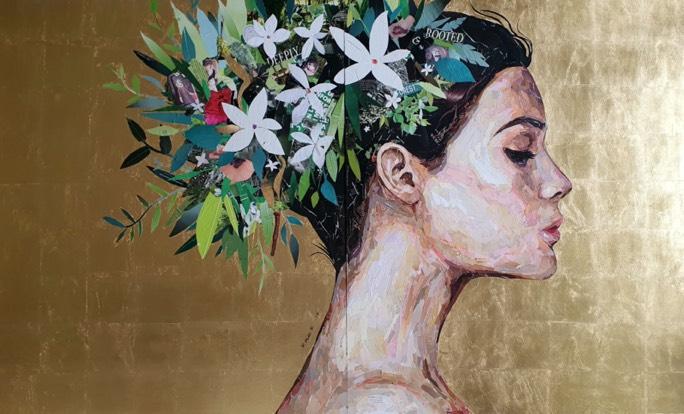
10
Materiales, revistas descartadas
Materials,discarded magazines

11

64 x 85 cm 12
“AUTORRETRATO, MALA CONEXIÓN” (México, 2019) Collage on Fabriano Paper

3 ALIMENTO
FOOD
3
COMO MATERIAL
AS MATERIAL
“CACTO-GRABADO” (México, 2019)
Nopal y tintas para grabado
Nopal and engraving inks
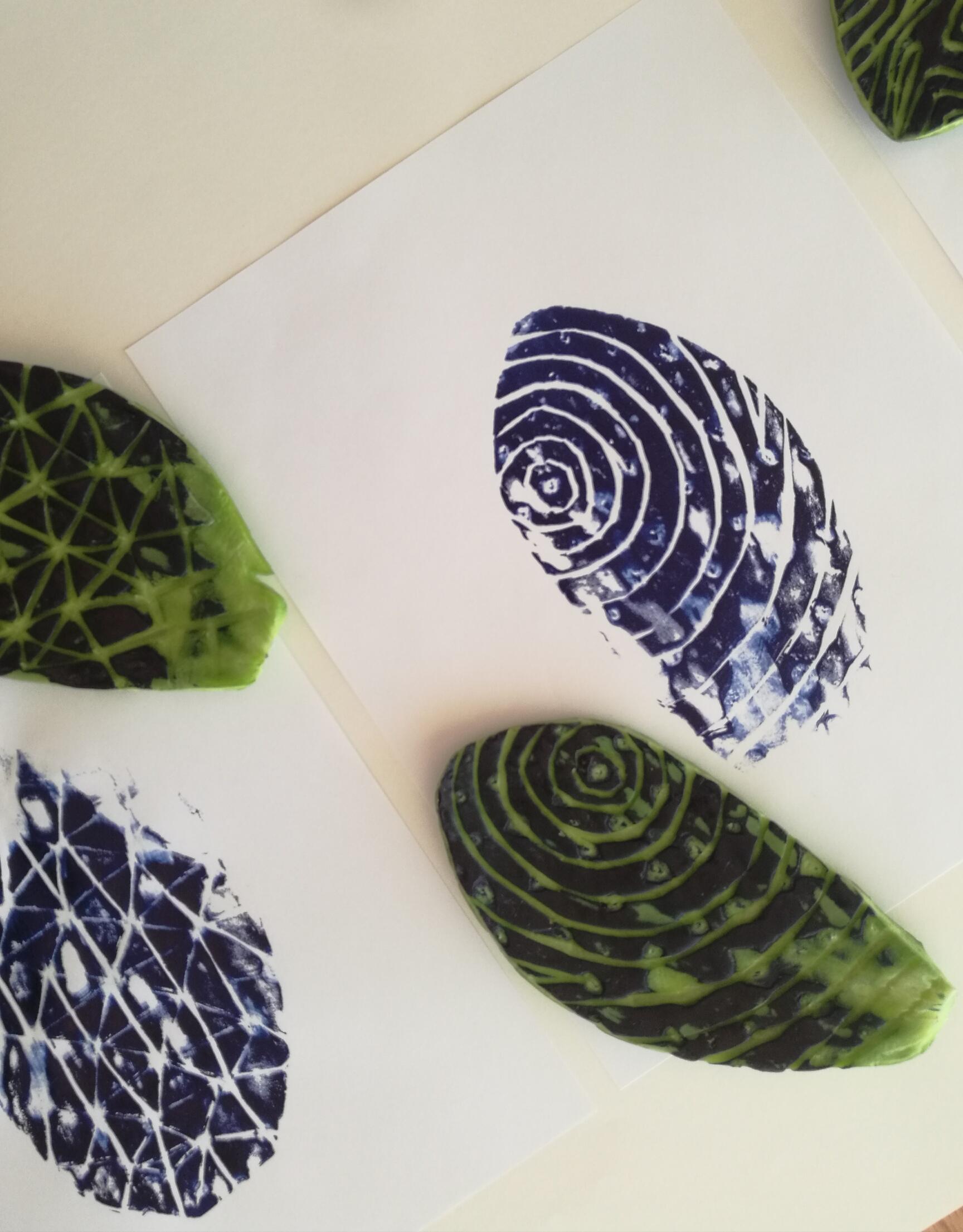
14
“INTERVENCIÓN SOBRE EMPAQUE DE TAMAL” (México, 2012)
Hoja de tamal teñida con flor de jamaica
Corn husk dyed with jamaica flowers

15
“TORTILLA FLOWERS, EDIBLE PLATE” (México, 2012)

Tortillas de maíz azul cortadas con cuchilla
Blue Corn Tortillas
16
“CAGE CHAIR” (México, 2011)

Hierro forjado
Forged iron
17
4
OBJETOS OBJECTS
“WALKING BOOKS” (México, 2010-2011)
Vaciado de resina pigmentada
Casted pigmented resin

18
“ENVIROMENTAL OCHOCO “(Japón, 2013)
Porcelana esmaltada, Cerámica Kiyomizu, molde hecho a base de botellas de té de un solo uso


Glazed Porcelain, Kiyomizu Ceramic, mold made with discarded tea bottles

.
The way we look at an object can change its value forever, humans collect information from their daily environment and often use it as a source of inspiration, the nature, the flowers, the animals... but in this case the muse is an daily use industrialized object.
— Victoria Molina
Recortes con forma de plumas, hechos compulsivamente durante el confinamiento (2020)
Feather-shaped clippings, compulsively made during confinement (2020)

CARRERA CAREER 5
ESTUDIOS / STUDIES
Industrial Design (Magna Cum Laude), University of Monterrey, Mexico 2006-2011
Technical Training “Modern Design and Traditional Techniques”, Kioto Kogei Senei Daigaku (KIT), Kyoto, Japan 2013
Academic Exchange, Polytechnic of Torino, Torino, Italy 2009
RECONOCIMIENTOS / AWARDS
2nd place "Mi pictures of Japan 2019" for the picture "Fire birds, Fishing at Uji (2013)" by ASEMEJA, Mexico City, 2019
"45 Success Stories" for the 45th anniversary of Universidad de Monterrey 2014
Selected "Emerging Designers" Architectural Digest Magazine 2013 for its anniversary edition
Finalist "Design Icons 2013" by Architectural Digest Magazine 2013
"Best Students of the State of Nuevo León" by the H. Nuevo León Congress 2011
"Magna Cum Laude Honors" Universidad de Monterrey 2011
"Recognition of Leadership and Values" Universidad de Monterrey 2011
"Distinguished Student" Universidad de Monterrey 2008, 2010
Shortlisted “Lo imaginé, lo diseñé… Hagámoslo” National Stainless-Steel Prize 2009
EXPOSICIONES
INDIVIDUALES / SOLO EXHIBITIONS
2021 - “El Crepitar de las Hojas, Sobre la Impermanencia del Paisaje Sonoro / The Crackling of The Leaves, about The Impermanence of The Sound Landscape” Pedro Ávila Art Gallery, Metepec, State of Mexico
2020 - "Hasta que Deje de Ser Costilla / Until I Stop Being a Rib" Technological Institute of Toluca, Metepec, State of Mexico
2019 - "Introspección y objetos de mis cajones / Introspection and Objects of my Drawers" Villas del Campo, Calimaya, State of Mexico
2019 - "NECTAR 030" Museo del Alfeñique, Toluca, State of Mexico
2017 - "Esencia / Essence" Pedro Ávila Art Gallery, Metepec, Mexico
2006 - "Mujer de Plata / Silver Women" The Coffee Factory, Metepec, State of Mexico
EXPOSICIONES COLECTIVAS / GROUP EXHIBITIONS
2021- "Feria de Arte EDOMEX 2021 / Art Fair EDOMEX 2021" Museo Galería de Arte Mexiquense Torres Bicentenario / Museum Gallery of Mexiquense Art Torres Bicentenario, Toluca, State of Mexico
2021- "¿Un Año Perdido? / A Lost Year?" Centro Cultural Toluca / Toluca Cultural Center, Toluca, State of Mexico
2021- "Festival Arte 2660" Hotel Margarita, Toluca, State of Mexico
21
2020 - "Primera Feria de Arte EDOMEX / First Art Fair of Mexiquense Art EDOMEX" Museo Galería de Arte Mexiquense. Torres Bicentenario, Toluca, State of Mexico
2020- "Vive México" Museo Zanbatha, Museo del Valle de La Luna, Mexico
2020- "Quetzales" Hotel Misión, San Cristóbal de las Casas, Mexico
2020- "Día Mundial del Arte 2020 / World Art Day 2020" Asociación Internacional de Artes Plásticas (AIAP) Asociación de Artistas Plásticos de México (ARTAC) / International Association of Plastic Arts (AIAP) Association of Plastic Artists of Mexico (ARTAC)
2020 - "Territorio Mexiquense, Radiografía del Arte Contemporaneo / Mexiquense Territory, Radiography of Contemporary Art" Centro Cultural Toluca, State of Mexico
2019 - "Visuality: Gestures and Processes" Museo del Barro de Metepec, State of Mexico
2019 - “Building with Art a Helmet of Help” organized by the Mexican Chamber of the Construction Industry, Centro Cultural Toluca, State of Mexico
2019 - "No Andaba Muerto, Andaba en el Alfeñique / He was not dead, he was in the Alfeñique" Alfeñique, Museum Toluca, State of Mexico
2019 - “Miradas Femeninas” Regional Cultural Center of Valle de Bravo, State of Mexico
2018 - "Essays of Matter, the Work in Progress" Áurica Center for Art and Culture, State of Mexico
2018 - "Lucca Art Fair 2018", Lucca, Italy
2015 - "Expo-Venta Arte 2015 / Art Expo & Sale 2015" Museum of Modern Art of Toluca, State of Mexico
2013 - "Heterogeneus Project" Tokyo Designers Week, Tokyo, Japan.
2013 – “Drop” presented at Kyoto Concert hall for “L’Image du Son” by Takuma Takahashi
RESIDENCIAS / RESIDENCES
2016- "Amar Abierto - Residencias Creativas / Amar Abiero Creative Residences" Ensenada, Baja California https://vimeo.com/159276827
CONFERENCIAS Y CHARLAS / CONFERENCES AND TALKS
"Food Design for Art", Hotel Margarita, Fonda & Boutique, Toluca, Mexico, 2021, "Festival Arte 2660"
“Food Design y Emociones / Food Design and Emotions”, Centro Cultural Riviera de Ensenada, Mexico, 2016 for the “4to Encuentro Latinoamericano de Food Design / "4th Latin American Food Design Meeting”
“Minería de Datos Aplicado a Alimentos Mexicanos / Data Mining Applied to Mexican Foods”, Facultad de Ciencias de la Salud de Porto Alegre, Brasil, 2015, “3er Encuentro Latinoamericano de Food Design / 3rd Latin American Meeting of Food Design”
Design Week Speaker, University of Monterrey, Mexico 2015, “UDESIGN”
“Panorama del Food Design en México / Panorama of Food Design in Mexico”
22
Universidad Nacional de Colombia and Universidad de los Andes, Bogota Colombia 2014, “2do Encuentro Latinoamericano de Food Design / 2nd Latin American Meeting of Food Design”
“Maize Culture; Tortillas as a Material of Design” Otago Polytechnic, Dunedin, Nueva Zelanda 2014, “International Food Design Conference & Studio”
“Empowerment of Women in the Knowledge Society” Technological Institute of Toluca, Metepec 2012 for the “International Women’s Day”
23
Discovering Your Sacred Paradise With Victoria Molina Vargas’ Collages
Brenda Hernández Jaimes (Journalist)
When you come across the art of Mexican artist, Victoria Molina Vargas, you feel as if you’re being plucked from your spot and quickly immersed in the tiny details featured on her collages and paintings. At least, that’s how I find myself swirling in her art. Questions about her creative process, themes, and materials she utilizes start bubbling in my mind. Having the honor of being invited into her fascinating artistic mind is a true delight and being able to discover her love for the environment, and how she re-uses resources to create her pieces is simply wonderful.
“I have always been very concerned about the environment. It’s something that’s a recurring theme. One of the last exhibits I made was called, Essence, and talked about how the sacred space and the nature that surrounds you can influence you,” Victoria shares and goes into detail about her paintings. “These women were a little invaded by nature, but it was in this nature that each had a different ecosystem. It wasn’t just any plant, but it was an ecosystem that was important to me at a certain point in my life, the changes that I have experienced and places that left something in me, or where I was born.”
As an artist that has lived in many different cities and countries, Victoria not only paints of where she’s been, but she’s also acquired each lesson to her work ethic that every city has gifted her. While studying Industrial Design at the University of Monterrey, Victoria shares that living in an entrepreneurial city made her acquire a strong sense of initiating and completing her work. During her time in Torino, Italy, she acquired a taste for functional aesthetics that are extraordinary made, but it was in Kyoto, Japan, where Victoria’s life completely changed.
“It was an experience that marked me for life. Before going to Japan, I had this idea of working with artisans and when I returned to Mexico, I still wanted to, but I had all these ideas that I didn’t want to express them through design and I came back with the idea of continue making art,” she says happily. Born in Durango, Mexico, Victoria had always
(EN) 24
been a creative person that painted from a young age, but her parents persuaded her to study Industrial Design.
“They said to me, 'Oh, don't be an artist because it’s very complicated, and you’re going to starve to death.' Then I studied Industrial Design and I loved the career, it's a super amazing career, but I never left art. Art was always there. I love it and it’s something I could do,” Victoria states passionately. “I paint almost every day - even on Sundays. When you find something that you can do for free, then you’ve found your vocation. Doesn’t matter how long you’re in front of a canvas, I think it’s cool doing what you love.”
Currently living in Toluca, State of Mexico, Victoria sees the city as her sacred space and one can see the imprint that Toluca has ingrained in her collages.
“A sacred space for me is a place where you feel at home. Although I wasn’t born in Toluca, for me to go to Nevado de Toluca, is one of the most beautiful places in the world. I’ve been fortunate to visit many beautiful places, but I feel at home in the Nevado de Toluca. I feel that it’s a magnificent, perfect place that connects you with nature which is something I myself identify with. Many of the works of the Essence series feature the snow rose that’s a plant that only grows to three thousand meters above sea level and you can only find in the Nevado de Toluca,” she says excitedly. “If I can identify as a plant, I would be that plant! I know the city can be cold and sometimes not very beautiful, but I’m happy to live twenty minutes from a natural paradise!”
Victoria not only describes herself as the snow rose that can withstand temperatures below zero, rocky soil, and winds that exceed 60 kilometers per hour, but she’s also a creative person that is always researching in pursuit of knowledge. She loves reading about biology topics and declares that in another life, she would have been a biologist. Victoria shares that her creative process begins with her
(EN) 25
questioning about a certain plant or animal topic and quickly diving to investigating to learn. Once she has acquired the necessary information, she resurfaces with how to transmit her knowledge through her collages. Her series, Néctar, is the result of her restlessness of knowing more about the nectarivores.
“When I can’t keep so many things in my head, I feel I have to expel them in a certain way. For me, it’s art and what occupies most of my time. I have to get those ideas that I bring. I think that is a big part of my personality,” she declares.
“In my art, I don’t try to give arguments, but to question ourselves on how we react with the nature that surrounds us. Do we know or don’t know her? Do we appreciate her? Do we see her or do we see her when she disappears? Or we don’t realize she’s gone because we never really saw her,” she explains. “Néctar speaks precisely of the legacy and a comparison between the work done by bees, hummingbirds, and some mammals that eat nectar. It’s in this same activity of feeding themselves that they’re also generating, spreading, and transferring life. I think femininity, for me, is not so much like a pretty woman. For me, femininity represents nature a lot, it’s mother nature rather than a pretty woman. This femininity that’s in our surroundings and talking about these three elements of painting women, flowers, and animals are my questions about life, what surrounds us, and what we’re going to leave in this world when we’re gone.”
Through her love for nature and art, Victoria creates her collages with unwanted magazines that are no longer of use to most people in this world, but to her it’s a gift to reuse these unwanted materials to present them in a different light.
“For me, printed magazines are a waste, we’re seeing less of them than before. Magazines were treasures for many people. They took care of
(EN) 26
them because it was their magazines! Right now in this digital world, we live in nobody wants magazines. And if I have a lot of magazines, they’re garbage, but they’re a better ecological material than oil paint. It is destruction and construction. I destroy something to build something completely new,” she smiles. “That collage process is also a time capsule where you leave things. If you approach one of my paintings you can see dates and addresses or old ads for old tech devices. For me, it’s using this material to close a cycle of what matters to me and leave people with a message or a question that I want people to feel or begin to wonder when they come across my work.” www.victoriamolina.mx
+52 7226285005 © Victoria Molina All Rights Reserved (EN) 27
info@victoriamolina.mx
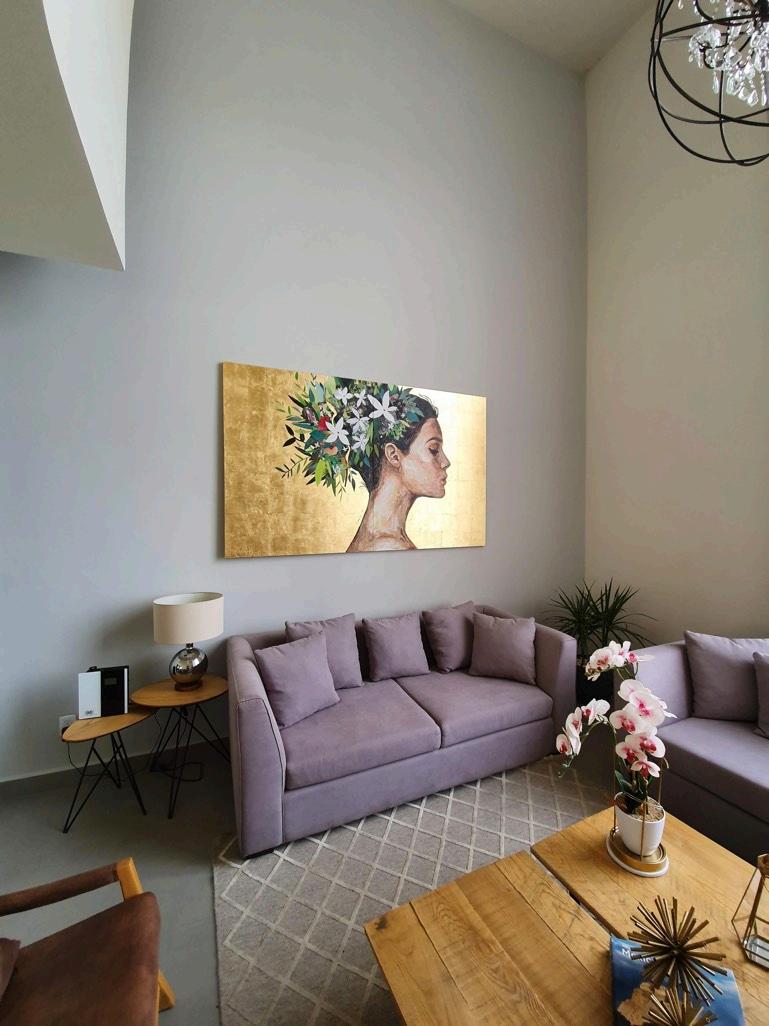
28
EXTRA
FOTOS EXTRA
PHOTOS

29

30

31

32
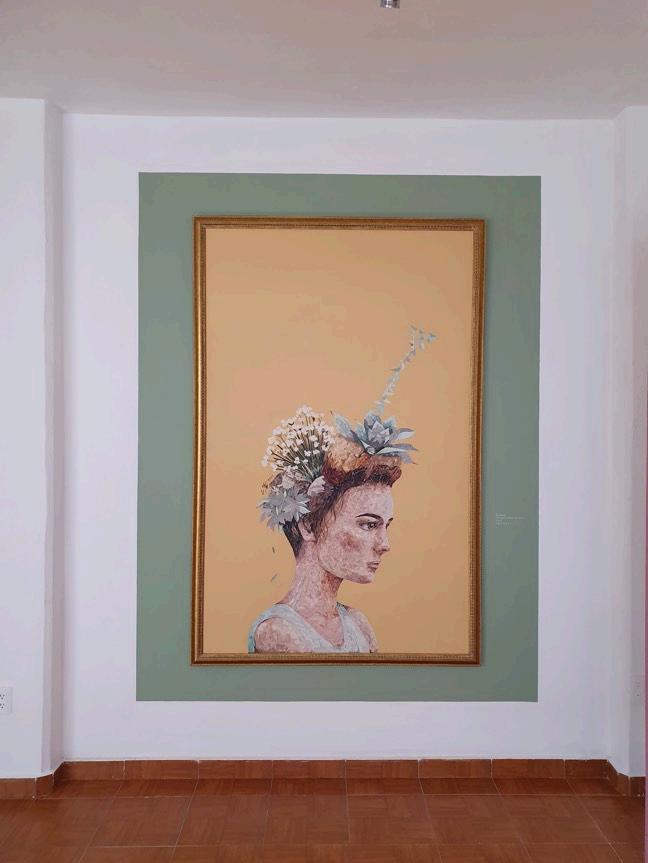
33

34

35
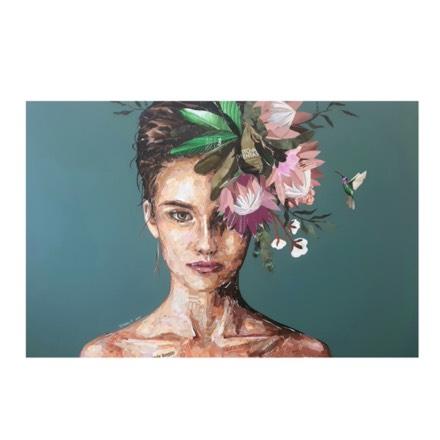

36


37


38


39


40

41



42

43

44

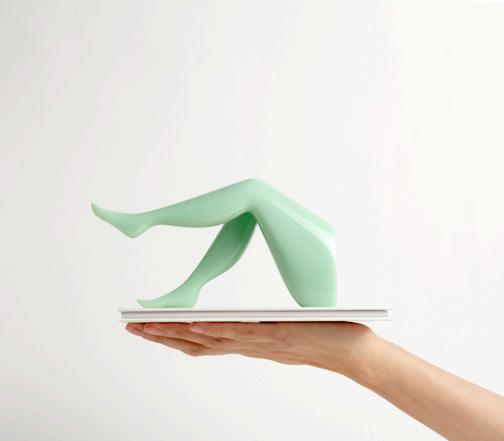
45

46



47

48


49
WWW.VICTORIAMOLINA.MX
50



 Fong
Fotografía por Hector Fong
Photo by Héctor
Fong
Fotografía por Hector Fong
Photo by Héctor




















































